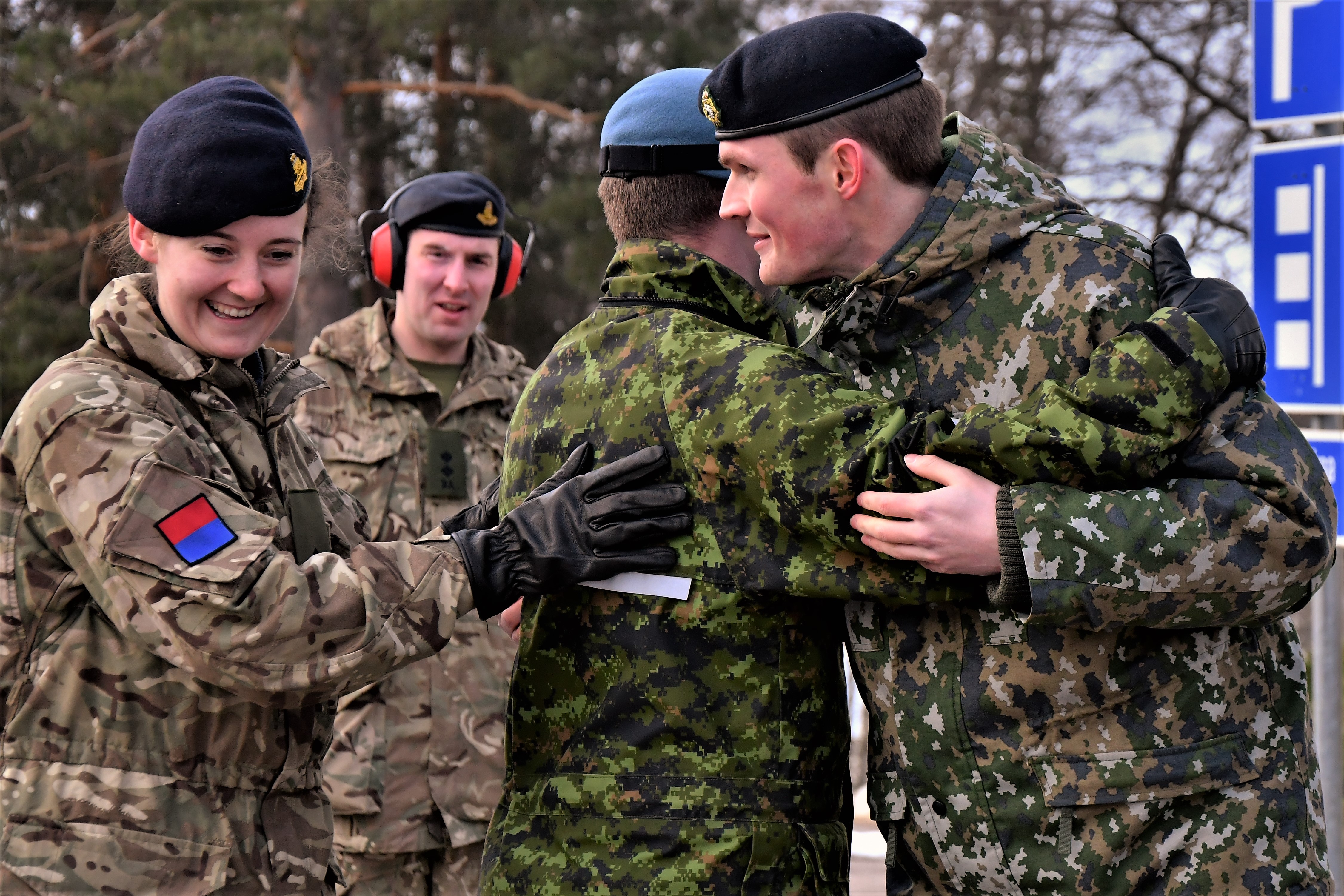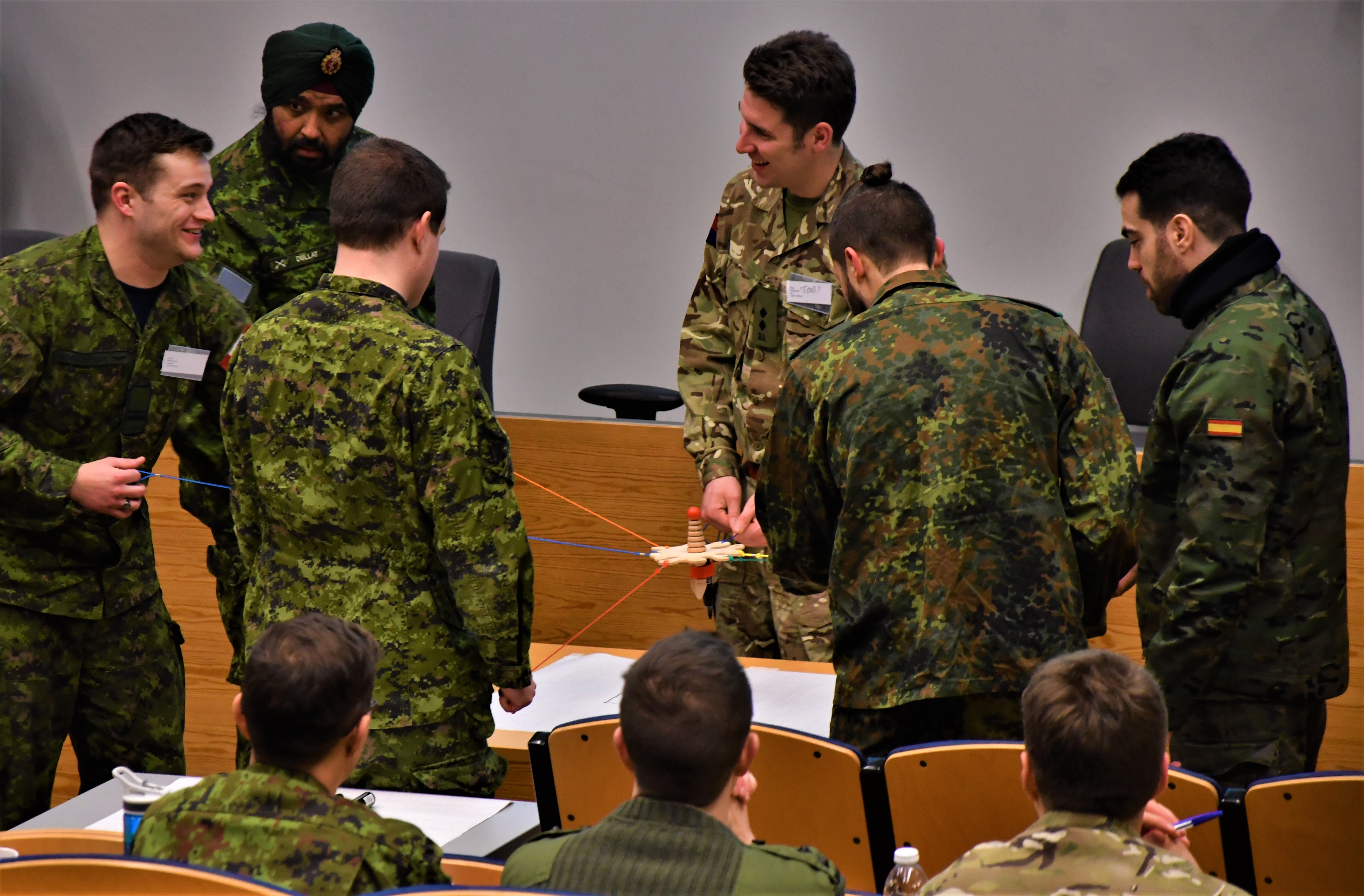“Hei” There: Young Reserve Officer’s Workshop in Tuusula, Finland
Magazine Article / October 4, 2019 / Project number: RCAF-RESERVE-20191004
When travelling abroad I like to try and learn a few words of the local language to feel more comfortable. After finding a little YouTube video on the Finnish language I had learned two things; Hello is, “Hei” (pronounced “hey”) and goodbye is, “Hei Hei”. I packed my bags and went to the airport confident that this would all be a cinch. Twenty hours later, as I staggered into my hotel room and stared at the placard saying, “Pyykkipäivä” (Laundry Day), I was very thankful that every single Finn speaks fluent English. Clearly, “Hei” and “Hei Hei” were as far as I was going to get.
Helsinki is a beautiful city; I was fortunate enough to have a few leave days available and I took some time to explore (and to get a head start on the jet lag). After a day and a half of excellent coffee, naps, and fantastic food, I ventured on to Tuusula, where the workshop was held. The Young Reserve Officer’s Workshop is an annual event hosted by the Interallied Confederation of Reserve Officers, an organization that represents over 1.3 million reservists in 34 NATO and allied countries. This year’s seminar, held in Tuusula, Finland from 27 February to 2 March, had over 40 attendees from 12 different nations. The goal of the event was to expose reservist junior officers to a NATO-like setting, where we would discuss military issues and the realities of operating in the NATO environment, with a primary focus on cultural exchange.
About 45 minutes after arriving in Tuusula, I had my uniform on and was taking notes during the seminar’s introductory remarks. I was joined by two other Canadians: Lt Jared Mackintosh, of 14 Mission Support Squadron, Greenwood, Nova Scotia, and Capt Charan Kamal Singh Dullat, of 15 Field Ambulance in Calgary. The event hit the ground running and didn’t stop, with every minute of the schedule packed full of discussions and cultural events. The primary focus of discussions, which were led by MWO Stefan Rubi of the Swiss army, was on cultural compatibility and the ways of conducting operations in an international setting. The evening cultural events were the planned time for networking, where all the attendees were able to relax and ask questions about each other’s militaries, cultures, and lives.
During the first afternoon, each nation took a turn giving a 15-minute presentation (all 12 nations agreed that “death by PowerPoint” is ubiquitous) on some details of their country and military/reserve structure. Some of the differences were absolutely eye-popping! For example, audible gasps were heard in the auditorium when the Danes told everyone of their 300EUR/day pay, while the Estonians glumly reported that they don’t get paid at all. Canada was one of the few countries that offer full-time Reserve employment, and there was a very lively discussion on the merits of allowing 16-year-olds to join and train. I also learned ─much to my shock─ that nobody in Austria knows about the film, The Sound of Music. The evening featured a cultural food and drink exchange, and every country brought out a few of their traditional delicacies and drinks. If anyone knows where I can find some good Hungarian sausage in Ottawa, please let me know!
Then, of course, as is tradition in Finland, it came time for the sauna. Now, it’s very important that I dedicate a large portion of this article to sauna (pronounced sow-na) because it is something that the Finnish take extremely seriously. To give proper context, the Tuusula military facilities consist of about 10 buildings in a small cluster with a lake providing a pleasant backdrop. Of those 10 buildings, two are saunas. Sauna is a staple of life in Finlana. I have never sweat so much in my life, as I did for hours every night in those humid rooms. The routine is simple: take a quick shower to wash off any smells and then take a seat in the sauna and sweat it all out. Not only is the sauna an experience in heat, but I could barely hear due to the amount of conversations and laughter as 40 of us got to know each other. It truly is amazing how quickly any barriers just fall away as everyone slowly melts in the heat and humidity. The cleanliness of the body and the mind afterwards was one of the most pleasant experiences of my life.
But the Finns are not the sort of people who are content with spending an evening in the sauna and laughing with friends; after about 30 minutes of enjoying the heat our activity leader asked who wanted to go jump in the lake. We all shuffled outside to the lake’s edge where there was a tiny dock with a ladder descending into a small hole in the ice. Earlier that day I had watched a man auger a hole and start ice fishing about 100 metres further down the shoreline. Now, I know that Canadians are no strangers to what we call the Polar Bear Dip. It’s usually a pretty big affair, with all of the local politicians and newspapers coming out and people raising quite a lot of money for charity. The Finns do it for free, every night. As much as I am now a believer in the joy of the sauna, as I climbed down the ladder into the freezing water I immediately wished I hadn’t. There must be something in the water out in Greenwood, though, as Lt Mackintosh was first in line when the Finns decided to jump in the lake a second time 30 minutes later.
The second day featured almost 10 hours of team building exercises and discussion groups. We completed some hands-on exercises with small obstacles that got us working on our communication, planning, and leadership skills. In the discussion groups, we examined the necessary skills to be successful in a multicultural environment and discussed the impact of having diverse cultures in an organization. An absolute highlight for me was discussing the differences in proper greetings and goodbyes around the world. An Austrian army lieutenant took the time to explain the differences in timing and number of kisses to cheeks around Europe, and it was riveting information for a handshake guy like me. In the evening we visited a lovely little museum nearby that was dedicated to the Lotta-Svärd, a paramilitary group of women dedicated to supporting military operations from 1918-1944. Many of these brave women provided vital support functions right up to the front lines and thousands more took up jobs in industries throughout Finland.
After the museum we went to the sauna.
The third day was built around more discussion groups, and each country took time to explore and explain the relationship between NCOs and Officers in our militaries. While the Canadian system was unsurprisingly very similar to the British system, it was very different when compared to a like Austrian or Swiss military, where every member starts as junior enlisted. In Norway, senior officers often choose to become NCOs. In the evening we piled onto a bus and went into Helsinki, where we were given a short tour of the historical city centre and ate dinner at the Officer’s Mess, which is a beautiful building overlooking the Helsinki harbour. Afterwards, we were given some free time, either to go shopping, on a longer tour, or spend some time at a famous sauna.
The final morning featured two outstanding presentations: one on Allied operations from a retired Finnish general, and another by a representative from the Finnish Institute for Hybrid Warfare. Then it was time to say our hei heis and we left Tuusula behind.
My biggest takeaway from this workshop is the realization that because of our own familiarity with multiculturalism in our ranks and throughout the country, Canadians are strongly positioned to act as leaders and champions of cultural diversity in international military environments.
I am now armed with a ton of new friends and an international network of fellow officers. I am proud to have represented Canada and our Air Force, and would like to thank Lt Mackintosh and Capt Dullat for their outstanding contributions as well. Learning so much about so many cultures in such a short period of time, as well as educating others about Canadian culture, is an outstanding tool that the RCAF Reserve absolutely should leverage again and again in the future.
Page details
- Date modified:

